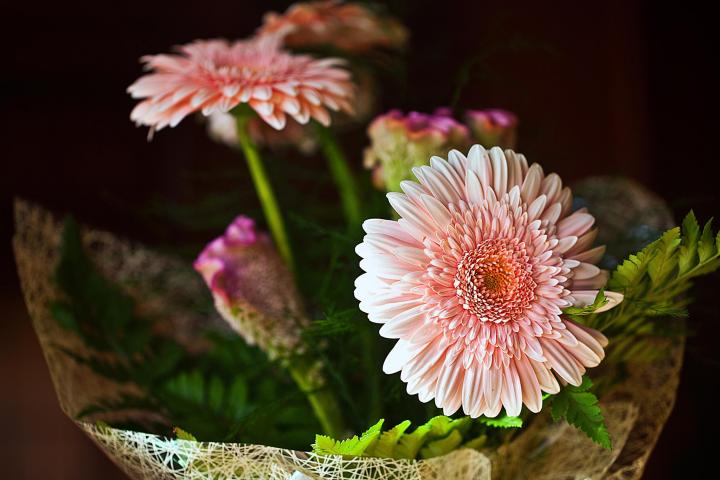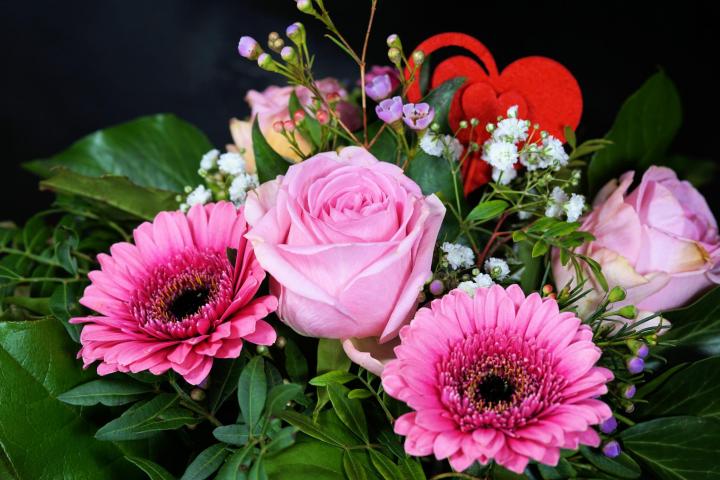How to Keep Cut Flowers Fresh and Alive Longer
Primary Image
Caption
Bouquet of asters, dahlias, and garden flowers
Photo Credit
Maskarad/Shutterstock
Plus: How Long Different Cut Flowers Last
For daily wit & wisdom, sign up for the Almanac newsletter.
Body
What is the best way to extend the life and freshness of your bouquet of cut flowers? Here’s advice from flower farmers to help you better understand how long different kinds of cut flowers last, how to cut flower stems for a vase, whether cut flowers need sunshine, and more about cut flower care.
When to Cut Fresh Flowers
Cut garden flowers early in the morning or early evening when temperatures are cool, and the stalks are filled with water. The midday heat is stressful to plants, causing them to wither more readily when cut.
For most flowers, avoid picking when in full bloom, or they won’t last as long; pick when they are just starting to show color. (
Note: This isn’t true of
roses, which do not continue to develop.)
How to Cut Flower Stems for a Vase
Always use a sharp knife. Avoid scissors, which can pinch the water channels of the stalks.
As soon as possible after cutting, place the stems in a bucket of clean, tepid water (not cold water).
If possible, leave the flowers in the bucket of water in a cool, dark spot for a few hours to let them stabilize before arranging. Even better, leave them overnight.
Keep flowers as cool as possible, but avoid putting them in your fridge if you can. Florists’ coolers range from 33° to 40°F, so your fridge likely won’t be cool enough, and any fruit or vegetable could emit ethylene gas, which shortens the life of cut flowers.
Selecting a Vase
Use a vase that’s large enough to provide plenty of room for all the stems, with a mouth that’s wide enough to allow for good air circulation.
Always use a thoroughly clean vase as bacteria can survive in dirty vases, and your flowers may not last as long.
10 Tips on How to Cut Flowers for a Vase
Strip all the leaves from the bottom half to two-thirds of each stem. Do not leave any leaves below the water line, as they could rot and ruin the water quality.
Re-cut the stems at an angle. A slanted cut helps if you are using floral foam; a stem with a point is easier to insert. Cut flower stems at an angle to prevent the stem from resting on the bottom of the vase and sealing itself over. Angular cuts also create a larger surface area for water uptake.
Cut stems underwater if you wish to shorten the stems on cut flowers before arranging them; otherwise, the stem can take in too much air, causing a blockage that keeps water from the flower. (This is especially true of roses.) Floral supply companies sell underwater cutters, or you can cut a flower in the garden, immediately submerge the stem in warm water and cut it again in the house while holding it below the water line.
Poppies,
milkweed, and other flowers with milky stems should be held in a flame for about 15 seconds immediately after cutting. This seals the latex in the stem but keeps the water-conducting vessels open. Without searing, the latex substance can leak into the water and cause it to spoil quickly. It can also affect the life of other flowers in the vase.
Don’t crush the stems. If you have a woody stem—on
lilacs, for example—just cut above the stem. For years, florists used to use mallets to crush the stems. In fact, pounding the stems makes them rot faster in the water. If you can’t cut above the woody stem, submerge the entire stem in water for 20 minutes to an hour before cutting.
Don’t use cold water. Flowers like to be warm and prefer water that is 80° to 110°F. The water in the vase does not need to be maintained at that temperature, but always start cutting flowers in warm water. Cold water has a higher oxygen content, which can cause air bubbles in the stems of your flowers, blocking their water uptake. Spring bulbs such as tulips and daffodils are the exception to this rule as they prefer to be placed in cold water.
Make your own flower food to nourish flowers. It makes a big difference to extend the life of the flowers. Mix 2 tablespoons of white vinegar, 2 tablespoons of sugar, and 1 quart of lukewarm water.
Do NOT put cut flowers in full sun. Display the bouquet away from direct sunlight, heat, or hot and cold drafts. Also, position the vase away from fruit bowls.
- Check the vase each day. Remove dead or fading blooms to prevent bacteria from damaging the healthy flowers.
- Change the water every few days, refreshing any flower feed as well.

How Long Do Cut Flowers Last
- Dianthus (including Carnations, Pinks, and Sweet Williams) are some of the best known of all cut flowers. They last 14 to 21 days!
- True Lilies, such as Oriental Lilies, last 8 to 10 days and add dramatic flair. When cutting lilies in the garden, leave a third of the lower stem. Note: Daylilies (which are not true lilies) are not cutting flowers; they don’t last more than 1 day.
- Sunflowers and gladiolus have a vase life of 7 to 10 days, and both make great cut flowers.
- Chrysanthemums last for 1 week or more.
- Tulips have a vase life of up to 7 days; they continue to grow after you arrange them. (Some flowers, such as daffodils, contain a type of sap that will shorten the vase life of other flowers. Tulips don’t mix with daffodils.)
- Peonies last 5 to 7 days. (Note: Take no more than a few blooms from each peony plant, and avoid cutting stems from plants that are less than 3 years old.)
- Sweet peas last 3 to 7 days and add height to a flower arrangement. The more you cut your sweet peas in the garden, the more they will bloom!
Here are reader favorites from the flower-cutting garden:
- May to July: Narcissus, Tulips, Peony, Snapdragon, Butterfly Ranunculus, Salvia.
- July to September: Sunflowers, Zinnia, Cosmos, Rudbeckia, Dahlias, Stock, Asters, Statice, Amaranthus
We hope these tips help you extend the lives of your cut flower arrangements! Do you have any tips of your own? Please share in the comments below!
About The Author
Catherine Boeckmann
Catherine Boeckmann loves nature, stargazing, and gardening so it’s not surprising that she and The Old Farmer’s Almanac found each other. She leads digital content for the Almanac website, and is also a certified master gardener in the state of Indiana.
Read More from Catherine Boeckmann











